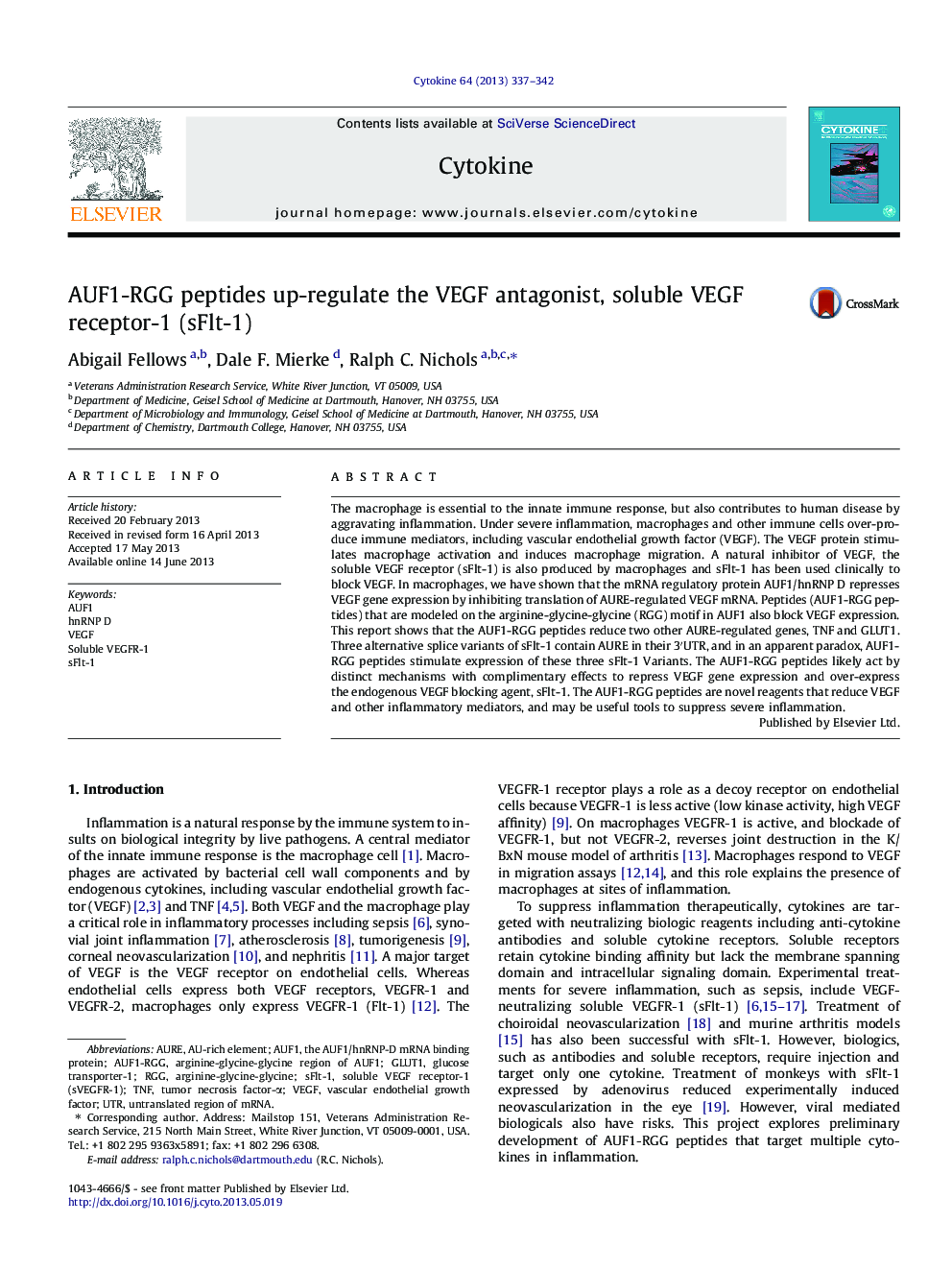| Article ID | Journal | Published Year | Pages | File Type |
|---|---|---|---|---|
| 5897790 | Cytokine | 2013 | 6 Pages |
Abstract
The macrophage is essential to the innate immune response, but also contributes to human disease by aggravating inflammation. Under severe inflammation, macrophages and other immune cells over-produce immune mediators, including vascular endothelial growth factor (VEGF). The VEGF protein stimulates macrophage activation and induces macrophage migration. A natural inhibitor of VEGF, the soluble VEGF receptor (sFlt-1) is also produced by macrophages and sFlt-1 has been used clinically to block VEGF. In macrophages, we have shown that the mRNA regulatory protein AUF1/hnRNP D represses VEGF gene expression by inhibiting translation of AURE-regulated VEGF mRNA. Peptides (AUF1-RGG peptides) that are modeled on the arginine-glycine-glycine (RGG) motif in AUF1 also block VEGF expression. This report shows that the AUF1-RGG peptides reduce two other AURE-regulated genes, TNF and GLUT1. Three alternative splice variants of sFlt-1 contain AURE in their 3â²UTR, and in an apparent paradox, AUF1-RGG peptides stimulate expression of these three sFlt-1 Variants. The AUF1-RGG peptides likely act by distinct mechanisms with complimentary effects to repress VEGF gene expression and over-express the endogenous VEGF blocking agent, sFlt-1. The AUF1-RGG peptides are novel reagents that reduce VEGF and other inflammatory mediators, and may be useful tools to suppress severe inflammation.
Keywords
Related Topics
Life Sciences
Biochemistry, Genetics and Molecular Biology
Endocrinology
Authors
Abigail Fellows, Dale F. Mierke, Ralph C. Nichols,
